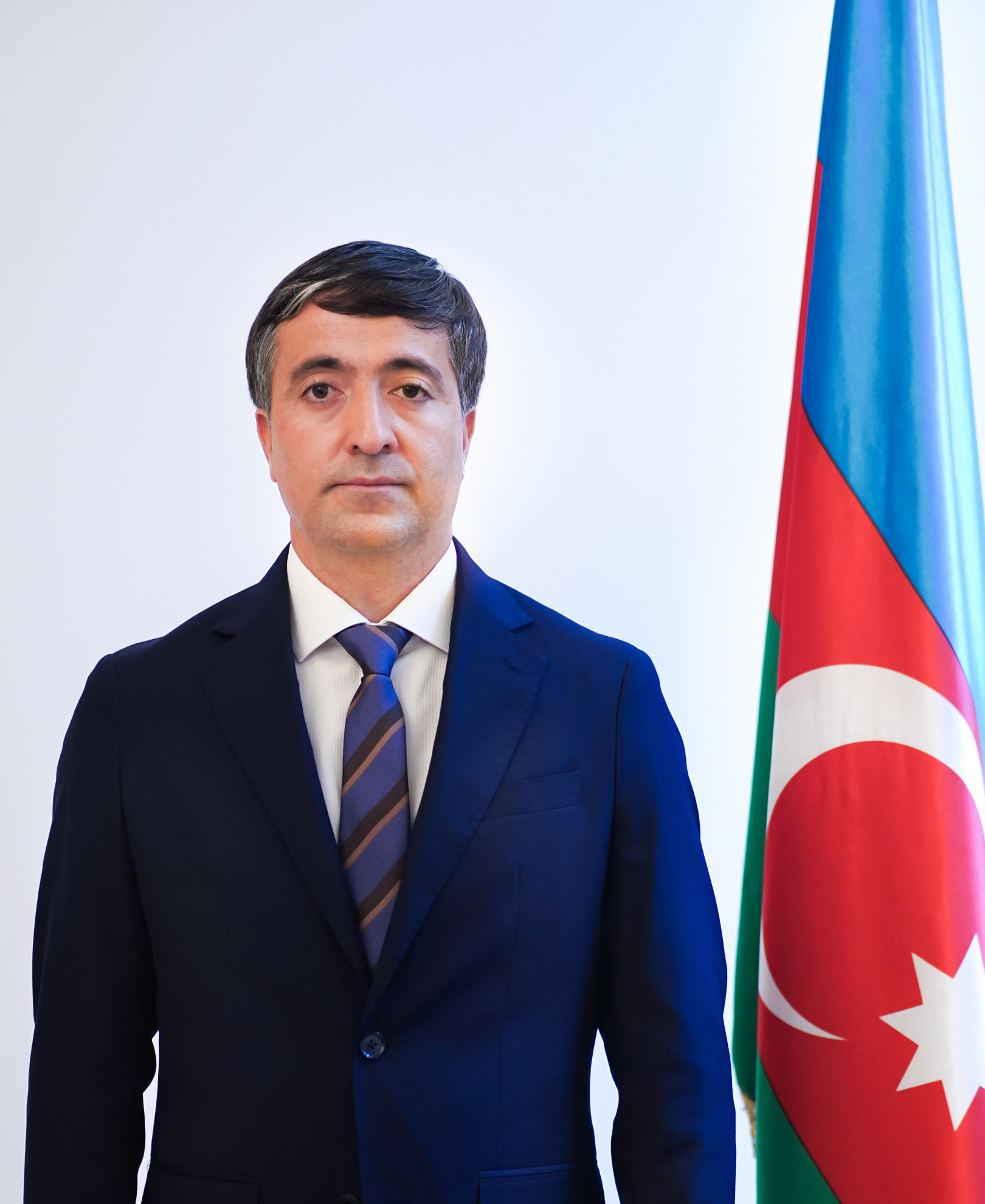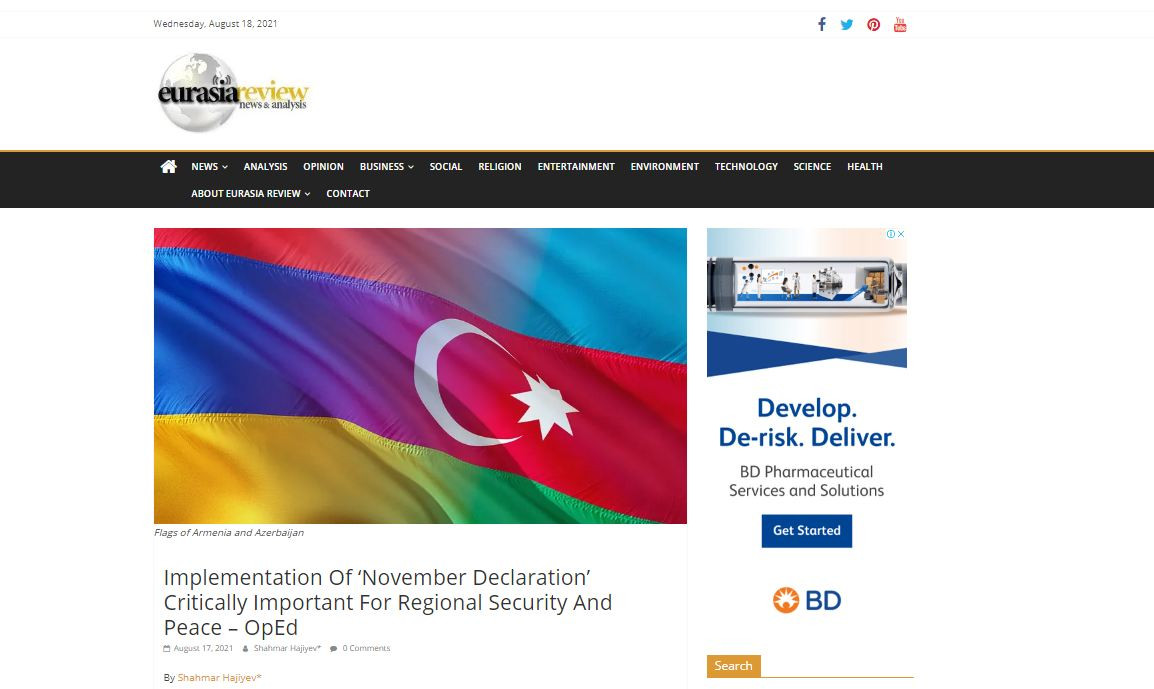2020 was a tumultuous year in the South Caucasus region that saw a widespread of COVID-19 pandemic and a new war between Armenia and Azerbaijan. The long-lasting Armenia-Azerbaijan conflict has led to human suffering and population displacement, and the “status quo” related to the occupation of Azerbaijani territories could not be a final resolution in this process. Following the six weeks of intense fighting in which both sides used all available weapons, thousands of people were killed and injured.
Under the mediation of the Russian Federation, on November 10, 2020, Armenia, Azerbaijan and the Russian Federation has signed a “Trilateral Declaration” (known also as the November deal) officially reaching a ceasefire and end to all military operations. Tripartite declaration should close the long-lasting hostility and open a new chapter in the region’s history as Armenia and Azerbaijan agreed to reopen transportation corridors and support regional economic integration. Now, the key question is how Azerbaijan and Armenia will live peacefully, and how the geopolitical landscape of the South Caucasus region will be changed in the near future. Importantly, the new full-scale military conflict between parties remains less likely as all major actors, especially Russia and Turkey prefer peace and stability in the region. According to the November deal, Russia became a key guarantor for the ceasefire and peace and deployed its peacekeeping contingent in Karabakh and along the Lachin Corridor. Also, Armenia pledged to return Agdam, Kalbajar, and Lachin districts to Azerbaijani control, while Azerbaijan guaranteed the security of the Lachin Corridor, to be used as a humanitarian connection between Armenia and Armenians living in Karabakh.
Analyzing the November deal, one could emphasize that during the post-war period the security issues and the restoration of economic relations by reopening transportation corridors are essential towards building trust, security and supporting sustainable peace. Although the conflict is over, there are still challenges and difficulties in implementing all clauses of the November deal. Specifically, the fourth clause of the November deal which stipulates – “The peacemaking forces of the Russian Federation shall be deployed concurrently with the withdrawal of the Armenian troops”. But, the continued illegal transit of Armenian armed forces and weapons through the Lachin Corridor to Karabakh may spark escalations and damage peace efforts. According to the statement of the Ministry of Defense of the Republic of Azerbaijan; “Violating the Tripartite Declaration, Armenia has moved its armed forces to the territories of Azerbaijan, where the peacekeeping forces of the Russian Federation are temporarily stationed, and set up new Armenian posts near Mukhtarkend and Shushakend, as well as in the eastern part of Kalbajar and Lachin districts”. All these facts and recent border clashes between Armenian and Azerbaijani forces in the Syunik province (Zangezur in Azerbaijani) demonstrated a climate of mistrust, therefore any small escalations may raise tensions between Armenia and Azerbaijan.
Another essential clause of the November deal is the ninth clause which stipulates – “All economic and transport connections in the region shall be unblocked. The Republic of Armenia shall guarantee the security of transport connections between the western regions of the Republic of Azerbaijan and the Nakhchivan Autonomous Republic to arrange unobstructed movement of persons, vehicles and cargo in both directions”. The Zangezur region has strategic importance for regional economic integration as Baku wants to restore the existing infrastructure of the Soviet period connecting its Nakhchivan exclave with mainland Azerbaijan through the Zangezur corridor. It is vital task for Azerbaijan to unblock this route in order to lift a long-lasting blockade of Nakhchivan region. There was no direct connection between Nakhchivan Autonomous Republic and mainland Azerbaijan, and people had to travel to Nakhchivan region either by air or by car via Iran or Turkey. Also, to support energy needs of the region, Azerbaijan signed the swap agreement with Iran in 2004 to supply natural gas to its exclave. Under the swap agreement Azerbaijan supplies gas to Iran’s isolated northwestern border city of Astara and only 85 percent of supplied volume flows to Nakhchivan Autonomous Republic. Later, in 2020 to support energy security of the region, Baku and Ankara signed a memorandum of understanding (MoU) for the construction of the Iğdır- Nakhchivan gas pipeline. The pipeline would carry 500 million cubic meters of natural gas without charge. The gas pipeline has strategic importance for Nakhchivan Autonomous Republic as it will eliminate energy dependence on Iran.
For Turkey, the reopening of the Zangezur corridor has a geostrategic importance as Ankara will have a direct land passage to mainland Azerbaijan. Also, the corridor will increase trade between Turkey and Azerbaijan by further supporting economic integration. Particularly, Turkey is very interested to have direct access to Central Asian markets through Azerbaijan because such route would be shorter and cheaper. At the present, the Turkish trucks mainly use Russia-Georgia routes before heading to Central Asia.
For Russia, the reopening of the corridor will open a railway route to Armenia via Azerbaijan which is cheaper and more profitable because of tension and mutual mistrust in relations between Moscow and Tbilisi. Particularly, according to the ninth clause of the November deal – “The Border Guard Service of the Russian Federal Security Service shall be responsible for overseeing the transport connections”, hence Moscow should support the Zangezur corridor which would be the first important step towards security and stability in the region.
As one can see from the above-mentioned facts, the November deal comes from the strategic interests of all involved parties. First of all, unblocking the Zangezur corridor would bring new economic opportunities, as well as support a final peace deal based on mutual recognition of territorial integrity. Through economic cooperation and integration, Azerbaijan and Armenia can open a new page in bilateral relations and end hostility between two nations. Armenia can also take advantage of regional projects and support its energy security. The Azerbaijani government has already started reconstruction works in all liberated territories, and the government is ready to support the Armenian population of the Karabakh region.
At this point, the crucial question is why Armenia is not willing to implement all clauses of the November deal. The document faced opposition in Armenian society. Those people who criticized the terms of the November deal mainly support the “Karabakh clan” (ex-presidents Robert Kocharyan (1998-2008) and Serzh Sargsyan (2008-2018)) which was in power in Armenia for twenty years. While the policy of the occupation brought Armenia to the catastrophe in 2020 war, considerable portion of the Armenian society cannot still accept defeat in the Second Karabakh war, hence calling to revanchism. Armenian nationalists consider reopening of the Zangezur corridor as another political defeat. Towards this end, Yerevan also supports the idea of opening Ijevan -Gazakh-Baku railway route instead of the Zangezur corridor. However, according to the November deal all regional communications, including Ijevan-Gazakh-Baku railway route must be restored anyway.
However, Russia as the main guarantor of stability and security in the region has to ensure the full implementation of the November deal, because any violation of the document would negatively affect Russian peacekeeping and peacemaking status. It should be especially underlined that if Armenia continues to move illegally armed forces to Karabakh and rejects the reopening of the Zangezur corridor, then the process will undermine a Russia-brokered ceasefire deal. Last but not least, cooperation between Turkey and Russia must be essential for sustainable peace, and the reopening of the Zangezur corridor would bring new economic opportunities and benefits for all involved parties.








